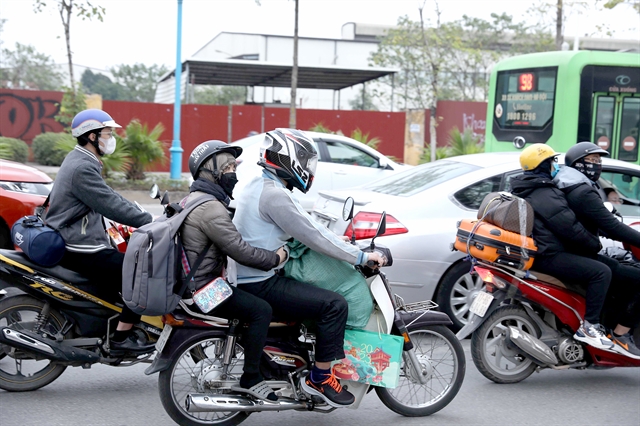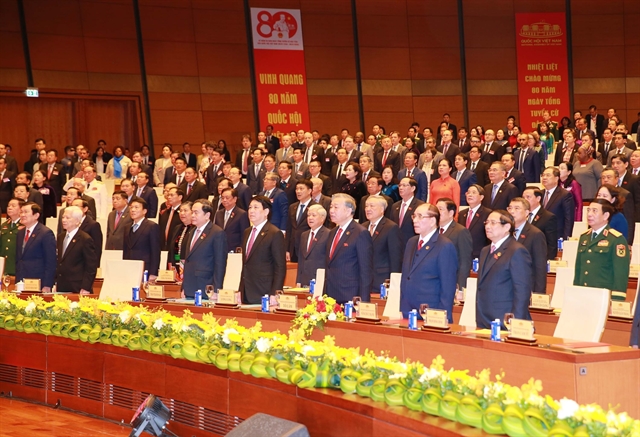 Society
Society

 |
| People pack up and leave Hà Nội for their hometown for the Tết (Lunar New Year) holiday in January 2023. Seeking employment is among the top reasons for internal migration. — VNA/VNS Photo Hoàng Hiếu |
HÀ NỘI — Internal labour migration is seen as a necessity for national socio-economic growth, but regulatory measures are needed from the government to mitigate the challenges that come with worker mobility.
According to the 2019 National Population and Housing Census, Việt Nam counted 6.4 million internal migrants, accounting for 7.3 per cent of the country’s population of five years and older.
Internal migrants are defined as people aged five or above whose current place of residence, and their place of residence five years ago, do not belong to the same commune-level administrative unit.
Việt Nam’s internal migration is closely linked to urbanisation. From 2000 to 2010, the number of urban areas in the country increased by 2.8 per cent annually.
Since 2000, the number of internal migrants has grown along with the economic development and the shift in economic structure, from agriculture to industries and services.
Urban economy grows on average 12 to 15 per cent per year, equivalent to 1.2 to 1.5 folds the overall growth rate of the national economy, and accounts for around 70 per cent of the national GDP (gross domestic product).
As of 2022, Việt Nam has nearly 900 urban areas of all types.
Việt Nam’s agricultural sector has around 7 million hectares of farmland and requires around 19 million workers, but the actual number of rural labourers stands at more than 25.5 million.
People in rural areas are only occupied with work for around 70 to 75 per cent of the time.
Urbanisation and the rapid emergence of industrial and export processing zones shrank farmland and create non-agricultural employment, prompting labour migration from rural provinces to cities and industrial parks for job opportunities.
The 2021 Việt Nam Population Change and Family Planning Survey by the General Statistics Office showed that among the six socio-economic regions of the country, the Red River Delta and the southeastern region are the two with positive net migration rates.
The southeastern region receives the most number of migrants at 290,000 people, followed by the Red River Delta at 81,000.
Meanwhile, the Cửu Long (Mekong) Delta has the largest number of people migrating to other localities at 214,000.
Women account for 55 per cent of the total migrants in the country.
Seeking employment is among the top reasons for migrating, and up to 61.8 per cent of migrants also belong to the 20-39 age group.
Although contributing to urban development and expansion, migrant workers also increase the burden on the city infrastructure such as schools, hospitals, and utility demands, leading to challenges in social welfare, education and health care, as well as urban issues such as traffic congestion and environmental sanitation.
Women and children are also among the most vulnerable groups, with child migrants facing difficulty in accessing education, especially at the secondary and high school levels.
In addition to developing satellite urban zones, improving urban infrastructure and welfare policies, steadfast rural development is also considered a rational and sustainable solution.
The number of internal migrants climbed from 4.5 million in 1999 (equivalent to 6.5 per cent of the total population) to 6.7 million in 2009 (8.5 per cent). However, in 2019, this figure dropped to 6.4 million people, or 7.3 per cent of the national population.
This decrease was attributed to local socio-economic development projects and target programmes, especially for new-style rural area development.
Việt Nam has a population of 100 million people, of which 61 per cent live in rural areas.
As of Q2 this year, the country has approximately 52.3 million people in the working age group of 15 to 60, of which 32.2 million (62.9 per cent) live in rural areas and 19 million (37.1 per cent) live in cities.
To ensure the quality of life in rural zones, the Party Central Committee’s Resolution No 19-NQ/TW on agriculture, farmers and rural areas was issued on July 16, 2022 with key groups of tasks and missions to improve farmers’ livelihoods, while ensuring sustainable agricultural development and environment.
By empowering farmers and enhancing their life quality, this strategy is seen as an instrument to regulate internal migration flows in the future. — VNS
BOX
According to the United Nations High Commissioner for Refugees (UNHCR), the global number of people forcibly displaced has likely exceeded 114 million as of September 2023, or 1 in 73 people worldwide. Among them, 57 million people remained internally displaced due to conflict or violence.Meanwhile, the International Organisation of Migration (IOM) forecasts there will be approximately 405 million international migrants by 2050. According to the Consular Department of the Ministry of Foreign Affairs, Việt Nam counts more than 650,000 Vietnamese nationals working abroad, not including other types of migration. — VNS




